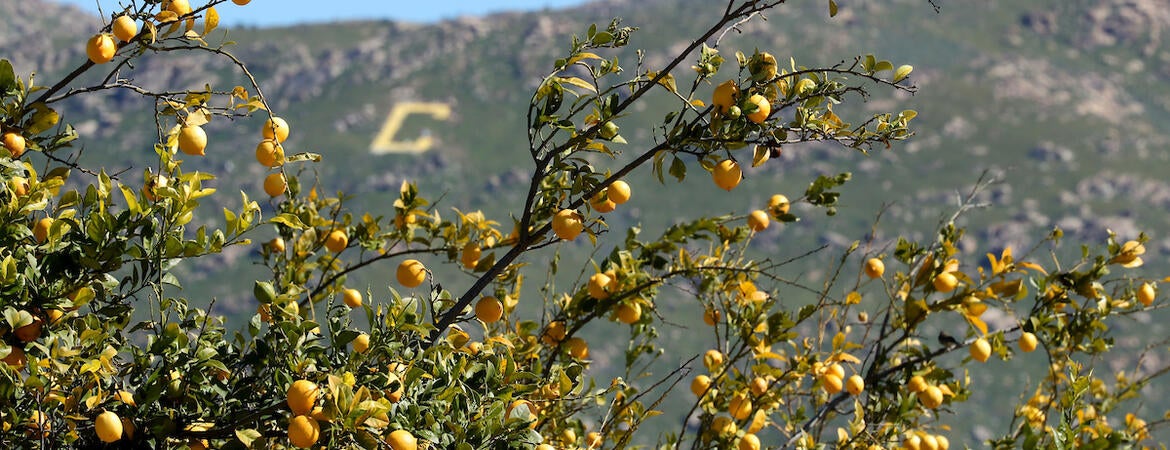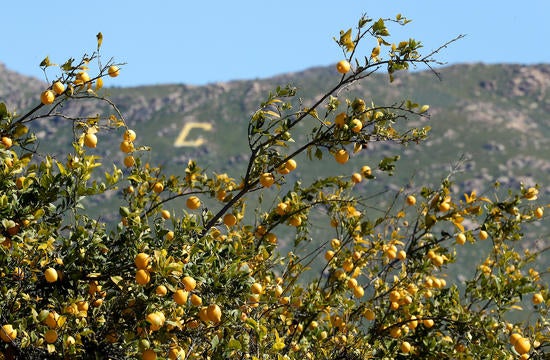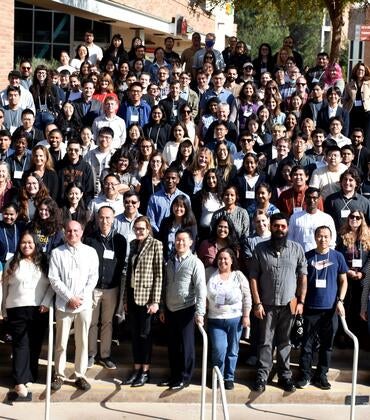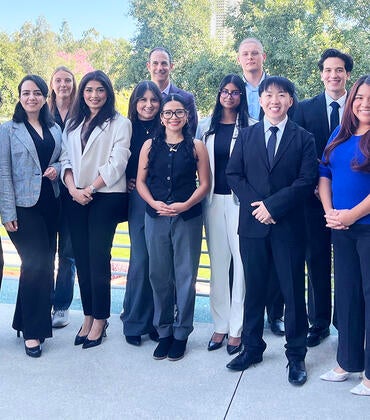California agriculture is a booming industry. The state is the largest agricultural producer in the nation, growing an annual bounty of more than 400 commodities — nearly half the nation’s fruits and vegetables among them — the sales value of which totaled nearly $50 billion in 2014.
For more than a century, the University of California Cooperative Extension, or UCCE, has provided California with programs that assist farmers and ranchers, educate youth and adults on healthy nutrition, and more. Today, the UCCE enterprise includes researchers at three UC campuses (Berkeley, Davis, and Riverside) and nine regional research centers, specialists at six UC campuses (Berkeley, Davis, Merced, Riverside, Santa Barbara and Santa Cruz), and advisors stationed at county offices statewide.
Many of those researchers, specialists, and advisors are responsible for producing and disseminating information to members of California’s agricultural sector on a variety of topics, including more efficient growing methods, crop selection, soil management, pest management, and smart water-use strategies, among others. Their work is funded by several sources: Federal, state (via the UC system), and county governments all contribute financial support to extension.
“It’s a useful but expensive operation,” said Ariel Dinar, a distinguished professor of environmental economics and policy at UC Riverside.
“The original idea when agricultural extension was created more than 100 years ago was that it should be considered a public good and thus provided for free to users,” Dinar added. Yet in recent years, extension has landed on the budgetary chopping block, with an ongoing public debate questioning whether it’s still worth funding.
In the hopes of making the case for its enduring utility as a public good, Dinar and several colleagues set out to quantify the contribution of UCCE to society and the people of California. Joining him in the research were Diti Chatterjee, a former doctoral student in UC Riverside’s Department of Environmental Sciences, and Gloria González-Rivera, a professor in the university’s Department of Economics.
Related studies were conducted by two additional researchers: David Zilberman, a Wolf Prize Laureate and professor who holds the Robinson Chair in the Department of Agricultural and Resource Economics at UC Berkeley, and Doug Parker, director of the UC-led California Institute for Water Resources. Their teams estimated the role and contribution of UCCE in developing and disseminating integrated pest management information in California, and sought to quantify the role of UCCE in the adoption of drip irrigation across crops and regions of the state.
In an article published in a recent issue of the Journal of Agricultural Education and Extension, meanwhile, Chatterjee, Dinar and González-Rivera measured the impact of UCCE on regional agricultural productivity. They found a positive impact of $1-9 in sales value per acre of farmland for each additional dollar spent on UCCE between 1992 and 2012.
“We were not surprised by these findings; in fact, we expected them,” Dinar said. “The return on extension is known to be very high — it’s a solid public investment.”
Using agricultural census data from the U.S. Department of Agriculture and the annual UCCE budget, the researchers weighed each county’s UCCE expenditures — budgetary expenses related to agricultural research and development, outreach, and knowledge dissemination, such as salaries — against the sales values of the crops and livestock produced within that county. They observed that 21 out of the 50 counties studied reflected a statistically significant impact of UCCE expenditures on sales values.
“The results of our analysis can guide policymakers during a period of political pressure to reduce public spending for agricultural extension in the state,” they wrote. In particular, extension efforts could be enhanced in counties with statistically insignificant or negative impacts, they suggested.
In a second study published in the Journal of the American Society of Farm Managers & Rural Appraisers, the researchers focused specifically on UCCE as a source of irrigation water management information.
California's agricultural sector is the state's largest consumer of water for irrigation, accounting for between 80% and 90% of human water usage, they noted. With that in mind, UCCE is engaged in research aimed at irrigation efficiency improvements and the development of water conservation technologies.
Using data from a USDA survey, the researchers found that on average, farmers who report turning to UCCE as a source of irrigation information tend to use more irrigation water, but they also have a higher average value of output per irrigated acre of land and higher water productivity.
Their results suggest that irrigation-efficient systems advocated by UCCE may be counterintuitive in terms of overall irrigation water use, they said. “However, UCCE’s irrigation information does lead to rise in output, and hence farmer revenue.”
This research was partially funded by the Office of the Vice President for the UC Division of Agriculture and Natural Resources, and by the Giannini Foundation of Agricultural Economics through its mini grant program.






